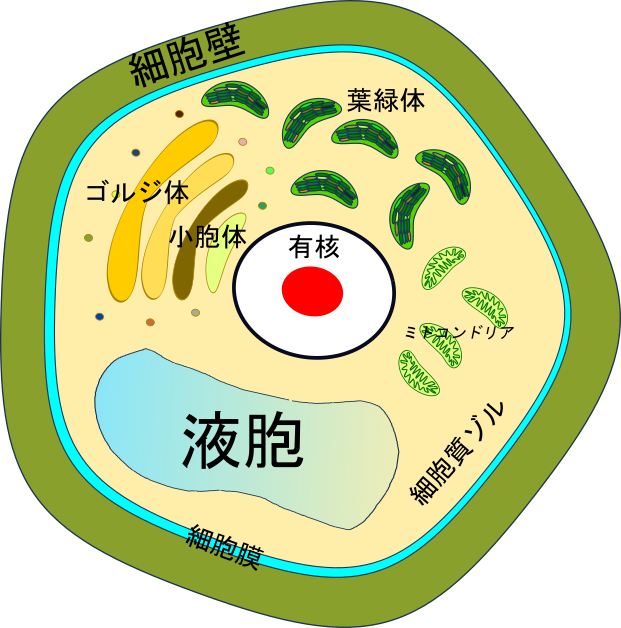Clean up your cells! The Best Protection Against Aging, Cancer, Alzheimer's disease & Co: 2. Autophagy and mTOR - Two Success Stories.
Special results or discoveries need not only a bit of luck, above all discipline, determination and especially perseverance and enthusiasm are required. Two good examples of this are the discovery of autophagy and mTOR. Although both stories are structurally different, they are essentially subject to the principles mentioned above. An example of incredible perseverance is certainly Mr. Yoshinori Ohsumi.
The discovery of autophagy:
Everyone knows the phenomenon of these days. Everything has to be done hectic and fast. No time to pause, no time to keep looking, not even enough time to pay tribute to supposed trivial things like running water or lightning fast data transmission. In these times, it is noticeable that people who are still able to wonder about something and therefore occasionally have a closer look to some things, often receive better results. One of these people is Yoshinori Ohsumi. Yoshinori Ohsumi was born in February 1945 in Fukuoka, Japan, and studied chemistry and molecular biology in Tokyo. Later, he earned his doctorate in biology and had his first job as laboratory director at the age of 43. By now, many people would already have surrendered long ago, because the main things the most people want are: a lot of money, a lot of power, everything with little effort and immediately. Not so Yoshinori Ohsumi! Yoshinori Ohsumi has always strived to find the optimal research field for himself, true to his motto: "Do what you find truly interesting." This was his goal and he did not care about anything else. One of the most interesting objects for him were vacuoles. Everyone knows vacuoles. Vacuoles are these large structures that are taught in biology lessons when painting plant cells on the blackboard and are considered as storage locations.

When asked about the function of vacuoles, the most pupils answer things like waste disposal, nutrient storage, organelles to maintain the turgor or something like that. So, on the first glance vacuoles are banal and boring for the most people, but at least easy to remember. Yoshinori Ohsumi, on the other hand, was so fascinated with these structures that he not only studied their properties on plants, he went one step further and wanted to know more about their purpose in yeasts. Every "normal" person would now finally think to himself: - “What's going on with him? Yoshinori Ohsumi works on long-lasting structures, whose function every sixth grader knows and instead of just leaving it at that, he goes on with yeasts, which are good for nothing else except cake and beer? Well then cheers!” - Yes, probably Yoshinori Ohsumi was never concerned about the great scientific or financial glory, he just wanted to do something he found exciting and these were the vacuoles. Done! But it got worse. When Yoshinori Ohsumi carried out his numerous experiments with vacuoles, he repeatedly noticed that some vacuoles behaved differently than others during centrifugation. – “So what? Get away with it and keep going!” - Not so Yoshinori Ohsumi. For him, these "special vacuoles" were of crucial importance. Even though nobody was really interested in these “special vacuoles”, except of Yoshinori Ohsumi, the entire field expanded by the end the 1980s until today. Eventually, in 2016 Yoshinori Ohsumi was awarded with the Nobel Prize for Physiology and Medicine. The reason for this honor was just that Yoshinori Ohsumi had found out that these "special vacuoles" are undergoing a process called autophagy. Autophagy (meaning, by the way, "self-eating") turned out to be one of the most basic and probably the most complex cellular mechanisms around. Preserved from brewer's yeast to humans, autophagy decides whether our cells are a "messy waste dump" or a perfectly organized movement. The mechanism of autophagy determines our destiny like no other cellular program.
So, in the next article, let's take a closer look at the mechanism of autophagy. Now let's turn the focus to another major discovery, namely the discovery of mTOR and Rapamycin.
The discovery of mTOR:
"Chance only affects the prepared mind" (Louis Pasteur). However, sometimes chances and luck are not that easy to catch. A fascinating combination of coincidence and aspiration is probably the discovery of Rapamycin and therefore mTOR. One thing in advance, the mTOR signaling pathway is one of the most important signaling pathways in our cells. Especially in the case of cell proliferation. Surprisingly, this has only been known since the early 2000s and probably it would have remained hidden even longer, if not someday someone had the idea to build an airfield. But not an ordinary airfield. This "special airfield” was built on one of the most beautiful and pristine places on earth. Namely on the Easter Island, also called Rapa Nui.

Since Rapa Nui was still untouched at that time, many scientists feared the loss of irretrievable treasures on the island. Because of this reason an expedition was launched, led by Stanley Skoryna. Finally, in 1964 the expedition was started and scheduled for 14 months to collect everything necessary. One of the souvenirs of Rapa Nui was the bacterium Streptomyces hygroscopicus. Nobody at this time probably was aware of that the discovery of Streptomyces hygroscopicus would bring such a stir to science in the future. Because of this reason, it probably took almost 10 years until a mysterious antibiotic could be isolated from Streptomyces hygroscopicus. In honor of Streptomyces hygroscopicus beautiful home (Rapa Nui) this antibiotic was then called Rapamycin. For whatever reason, perhaps because Rapamycin can only be used against fungi instead of bacteria (?), nobody was seriously interested in it again. It was only at the beginning of the 90s (more than 25 years after the recovery of Streptomyces hygroscopicus on Rapa Nui) that scientists came closer to this dubious substance. Since it was known to act on fungi, the brewer's yeast (Saccharomyces cerevisae, an easy-to-handle lab yeast) was simply treated with Rapamycin and the scientist tried to find any brewer's yeast mutant that was not affected by Rapamycin. And indeed, the scientists found one yeast that was untouched by Rapamycin and therefore gave a good hind concerning the genetic “Target Of Rapamycin” or TOR (Target of Rapamycin). Immediately thereafter, it also turned out that this “Target” is present in all living things from the yeast upwards. This also applies to mammals, which is why it is also called mTOR (mammalian Target Of Rapamycin). But it would take even more years to finally show what consequences this discovery finally had.
You have to imagine that! It took almost 35 years until a happy coincidence and the recurring initiative of many people led to significant insights into our daily life. But even more startling is the fact that these insights are so obvious that you seriously wonder why even today it’s not known to many people.
In the fourth article we will focus on Rapamycin and mTOR, and in the fifth article, mTOR and the autophagy will meet for a big showdown where you will finally learn what the supposedly boring studies of Yoshinori Ohsumi and the discovery of Rapamycin mean to you.
Until then, I wish you a nice week and leave me a comment, if you like the article, you have questions or objections.
Let's go Stemmians
Best
Chapper
References:
The image of the "Japanese cell" I made by myself and can be freely used without hesitation. However, it would be nice if you could quote this article here. Thank you very much😉
More about the life of Yoshinori Ohsumi you can find here
The picture of the stone figures is here
More Articles:
Jan Osterkamp; Nobelpreis für Physiologie oder Medizin: Abfallcontainer für den zellulären Recyclinghof; Spektrum der Wissenschaft 12.16; S. 25-26
David Stipp; Gerontologie: Ein neuer Weg zu längerem Leben; Spektrum Spezial Mensch 2.0; 3.2014; S. 50-57
A long and winding sTORy. Nat Cell Biol, 2017. 19(10): p. 1131.
Congratulations @chappertron! You have completed the following achievement on Steemit and have been rewarded with new badge(s) :
Click on the badge to view your Board of Honor.
If you no longer want to receive notifications, reply to this comment with the word
STOPTo support your work, I also upvoted your post!
Do not miss the last post from @steemitboard:
SteemitBoard World Cup Contest - The results, the winners and the prizes